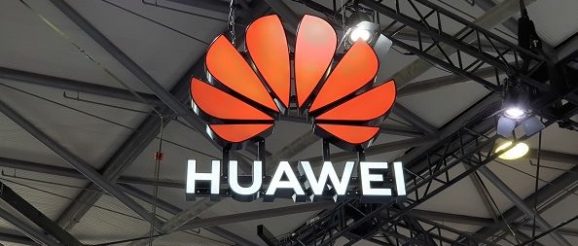Continuous 5G Innovation Accelerates Green, Low-Carbon Development

PARTNER FEATURE: On March 1, 2022, Global TD-LTE Initiative (GTI) held an online summit under the theme of “5G and Decarbonization”. The participants shared the current status and strategic plans of 5G development and discussed how innovating technology will help promote low-carbon growth across industries and help the world realize carbon neutrality.
At the summit, GTI interviewed Yang Chaobin, President of Huawei’s Wireless Solution, about green mobile development. President Yang shared the key factor that drives Huawei to continuously innovate to help operators ensure both network performance and energy efficiency as the industry continues to witness protracted evolution of mobile technologies and multi-band and multi-RAT coexistence. He went on to provide an overview of Huawei’s green solutions that enable operators to boost energy efficiency in various scenarios. He also emphasized that Huawei will continue to work with operators to promote 5G across industries to accelerate digital, low-carbon industry growth.
Here is the full transcript of the interview:
Moderator: Huawei is a leading global supplier by telecom equipment. What do you think equipment vendors can do to help operators save energy and reduce carbon emissions?
President Yang: With the continuous evolution of mobile technologies, multi-band and multi-RAT networks will co-exist for quite a long time. So, how to help operators build high-performance and high-energy-efficiency networks is a key factor driving our innovation.
First, we are introducing multi-band technologies into wireless networks. With one equipment to cover several frequency bands, dynamic power sharing can be realized across different frequency bands. This way, we can greatly improve energy efficiency.
Second, we also introduce multi-antenna technologies into wireless networks. With multi-antenna technologies, we can greatly improve the coverage of base stations, which means, if we want to provide seamless coverage in a city, then the number of base stations can be greatly reduced. So this way, the power consumption of operator networks can be reduced.
And we are working together with our customer on how to simplify sites with centralized RAN solution. So, this way, site solutions can be greatly simplified. Air conditioners in the site can be removed. For example, in 5G deployment, we use this centralized RAN solution, which helps operators reduce more than 30% of energy consumption.
In addition, we are introducing intelligence into mobile networks. With such kind of intelligence, mobile networks dynamically adjust output power with dynamics change of traffic. So, this way, we can greatly improve the energy efficiency of mobile networks, while at the same time, guarantee user experience of end subscribers.
Moderator: Can you tell us a little bit more about some of your technologies, for example, ELAA, a little bit more about how it can make the system greener?
President Yang: Extremely large antenna array, or ELAA for short, is a typical use case of multi-antenna technologies. When operators started to deploy 5G three years ago, normally, operators would use 192-element products. Till last year, we’ve introduced the extremely large antenna array. We use 384 elements now in 5G products. In this way, we can greatly improve the coverage of 5G base stations. So, when operators use such kind of products to fulfill 5G coverage, the number of base stations can be greatly reduced. So, this way, it can help operators improve energy efficiency.
Moderator: I know that to achieve decarbonization, you have to work with a lot of your stakeholders, and you mentioned China Mobile just now. So maybe you can say a little bit more about how Huawei is working with stakeholders.
President Yang: Huawei has set up several joint innovation centers with our key customers, like China mobile, Vodafone, and Deutsche Telekom. In the joint innovation centers, as for green technologies, how to help operators improve energy efficiency is a key topic. So, with the joint innovation with our key customers, Huawei provides innovative solutions to help our operators improve energy efficiency and also meet the requirements in different network scenarios.
We are also working with operators such as China Mobile to bring 5G into vertical industries, and to accelerate digitization and decarbonization across industries. China Mobile, for example, has helped reduce carbon dioxide emissions by over 800 million tons in the past five years. With the development of 5G, we will continue to make efforts with global operators to leverage 5G’s contribution to other industries.
Moderator: That’s very impressive. Obviously, everybody needs to work together, because to decarbonize quickly and by a large margin is actually very challenging. How do you see using a platform like GTI to help the industry, to help dialogue, and to make more advances and more quickly in the decarbonization?
President Yang: Yeah. For TDD frequency bands, it is the first time in the mobile industry that TDD spectrum has been a major frequency band for a new generation of technologies. Today, I think, for the deployment of 5G, TDD spectrum can bring the most differentiated user experience to end subscribers. TDD spectrum has a large bandwidth, which means that GTI can play a more important role in the development of the ecosystem of these TDD frequency bands. So we think that GTI can accelerate the application of green and new technologies to mobile networks. By so doing, we will be able to help operator increase network energy efficiency.
Meanwhile, both GTI and we can work with partners to further bring 5G to vertical industries, enabling them to benefit from digitalization, transforming their way of production and improving efficiency as well. This will enable 5G to contribute more to industry digitalization and low-carbon growth as it evolves towards scaled utilization.
